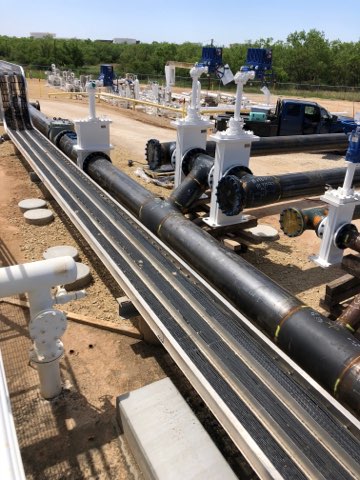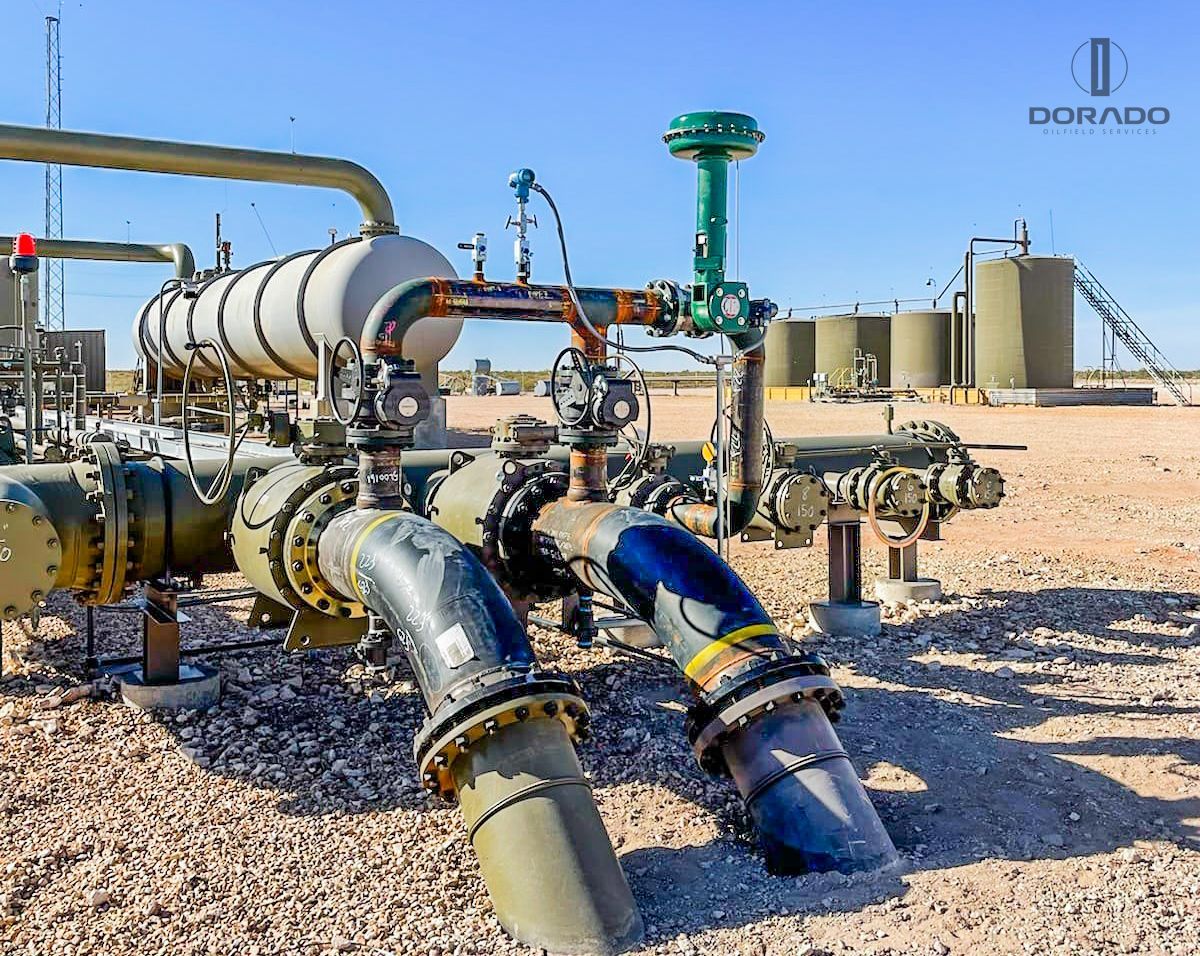Exploring the most up to date Innovations in Pipeline Construction Solutions for Modern Projects
The Pipeline Construction industry is undertaking substantial changes. Innovations such as smart products and robotics are reshaping conventional techniques. These innovations assure to boost effectiveness and security. Additionally, AI modern technologies are improving task administration capabilities. As these components merge, they elevate questions regarding their long-term influence on sustainability and expense. Understanding these innovations is crucial for stakeholders seeking to navigate this developing landscape. What implications do they hold for future jobs?
The Rise of Smart Products in Pipeline Construction
As the demand for more sustainable and effective Pipeline systems increases, the combination of wise materials has arised as a transformative service in Pipeline Construction. These advanced products possess special homes that enhance the efficiency and longevity of pipelines. As an example, self-healing polymers can immediately repair minor leakages, significantly lowering upkeep prices and downtime. Furthermore, products installed with sensors can keep track of structural honesty and ecological conditions, enabling real-time data collection and evaluation.
In addition, clever materials are usually lightweight and corrosion-resistant, which not just streamlines installment but additionally expands the life-span of the systems. Their versatility enables pipelines to hold up against extreme ecological problems, promoting security and dependability. As markets progressively focus on sustainability, using environmentally friendly wise materials adds to minimized ecological effect. In general, the rise of wise products marks a notable change in Pipeline Construction, leading the method for ingenious options to fulfill modern framework requirements.
Improvements in Robotics for Installment and Upkeep
The assimilation of clever products in Pipeline Construction is matched by innovations in robotics, which are changing setup and maintenance processes. Robotic technologies, such as automated welding systems and drones, boost effectiveness and precision, lowering human error and minimizing safety and security dangers. These robotics can run in challenging settings, making sure that installations are performed in dangerous or remote areas without putting employees at danger.
Robot examination tools equipped with innovative sensors provide real-time data on Pipeline honesty, enabling for aggressive maintenance. They can spot leaks or structural weak points, enabling prompt treatments that expand the life expectancy of Pipeline systems. The usage of robotics not just speeds up the Construction timeline yet also enhances source allocation, causing cost financial savings. As these technologies remain to develop, they are established to play a vital function in shaping the future of Pipeline Construction, making certain reliability and sustainability in facilities growth.
AI-Driven Task Administration Devices Transforming Workflow
AI-driven project monitoring devices are improving workflows in Pipeline Construction by boosting decision-making processes via better accessibility to real-time information analytics. These devices enable teams to respond promptly to task growths, thus raising effectiveness. Streamlined communication channels foster collaboration among stakeholders, better maximizing task end results.
Boosted Decision-Making Processes

Real-Time Data Analytics
Utilizing real-time information analytics, modern task monitoring devices change workflow in Pipeline Construction. These advanced tools utilize artificial knowledge to provide instant insights right into job efficiency, resource allotment, and potential threats. By continually keeping track of key efficiency signs, teams can quickly adapt to transforming problems, enhancing labor and products usage. The integration of real-time information enables even more educated decision-making, reducing hold-ups and lessening expenses. On top of that, predictive analytics can recognize patterns and forecast difficulties before they rise, improving total project performance. As a result, Pipeline Construction firms that embrace these AI-driven devices can improve task timelines and results, guaranteeing they continue to be affordable in a progressively complex market landscape. This development marks a substantial shift towards data-centric management practices.
Structured Communication Networks
Effective interaction is vital in Pipeline Construction, where various stakeholders have to collaborate flawlessly to ensure project success. The intro of AI-driven task management tools has actually transformed interaction channels within the sector. These tools assist in real-time information sharing, allowing teams to accessibility updates, share documents, and track development efficiently. By automating regular jobs and offering a central platform for interaction, these developments remove misunderstandings and minimize hold-ups. Enhanced exposure right into task timelines and source allowance promotes responsibility amongst staff member. Furthermore, AI analytics can determine possible interaction spaces, guaranteeing proactive problem-solving. Ultimately, streamlined interaction networks not just enhance operations but also raise overall job efficiency, enabling Pipeline Construction companies to satisfy modern demands efficiently.
Boosted Safety Protocols With Modern Technology Combination
The assimilation of modern technology in Pipeline Construction has actually brought about improved security procedures. Real-time surveillance systems, wearable security gadgets, and automated danger evaluations are currently crucial components in reducing threats on task websites. These developments not only improve worker security yet also streamline conformity with industry regulations.
Real-Time Monitoring Systems
Exactly how can real-time surveillance systems change Pipeline Construction security procedures? By incorporating advanced technology, these systems give continual security of Construction activities, ensuring immediate detection of possible dangers. Cameras and sensing units can keep an eye on ecological conditions, equipment efficiency, and workforce motions, delivering important data in real time. This positive approach permits job supervisors to determine dangers prior to they rise, considerably improving precaution on-site. Additionally, real-time tracking assists in compliance with governing demands, making sure that safety standards are met consistently. The capacity to evaluate information instantaneously supports educated decision-making, making it possible for timely interventions. Consequently, Pipeline Construction jobs can run more effectively while safeguarding the well-being of workers and minimizing crashes, thereby changing the industry's safety landscape.
Wearable Safety And Security Gadgets
Frequently, wearable safety gadgets are being incorporated into Pipeline Construction to improve safety protocols. These innovative tools, consisting of smart safety helmets, vests, and wristbands, are created to check worker health and environmental conditions in real-time. Geared up with sensors, these gadgets can identify dangers such as toxic gas exposure, excessive warmth, or high sound degrees, offering prompt notifies to workers and managers. In addition, wearable innovation commonly includes GPS tracking features, permitting efficient location tracking of personnel on-site. This capacity not just help in fast feedback throughout emergencies however also enhances overall job management. By prioritizing employee safety and security with modern technology assimilation, Pipeline Construction business are making considerable strides in decreasing crashes and promoting a society of security within the market.

Automated Danger Analyses
While typical danger analyses frequently rely upon hand-operated examinations, the integration of automatic danger analysis technologies is changing safety protocols in Pipeline Construction. These sophisticated systems take advantage of data analytics, fabricated intelligence, and device discovering to determine prospective threats more accurately and efficiently. By continuously keeping track of ecological problems, devices condition, and employee behavior, automated assessments provide real-time insights that enhance decision-making. This proactive technique minimizes the probability of mishaps and enhances conformity with safety and security laws. In addition, automated threat evaluations can be updated instantaneously, guaranteeing that all stakeholders have access to the most up to date information. Because of this, Pipeline Construction tasks profit from a much safer work environment, minimizing interruptions and promoting a culture of security with technology integration.
Lasting Practices in Pipeline Construction
As the demand for power facilities climbs, the Pipeline Construction sector significantly prioritizes lasting practices that decrease environmental effect. Firms are adopting environment-friendly products and advanced Construction strategies to reduce their carbon impact. For example, making use of trenchless innovation enables Pipeline setup with marginal disturbance to the surrounding atmosphere, maintaining natural habitats and lowering soil disintegration.
Furthermore, the execution of renewable resource sources, such as solar or wind, to power Construction tasks is acquiring grip. This change not just lowers reliance on fossil gas yet additionally boosts the general sustainability of Pipeline projects. Furthermore, efficient waste administration techniques, including recycling and recycling products, are becoming standard in the market.
Real-Time Tracking and Anticipating Upkeep Solutions
The change towards sustainable techniques in Pipeline Construction has led the way for the assimilation of real-time surveillance and predictive maintenance options. These modern technologies utilize advanced information and sensing units analytics to constantly evaluate Pipeline honesty and functional performance. By accumulating data in real time, drivers can identify abnormalities such as leaks or pressure declines before they escalate right into severe problems. This proactive technique not only reduces ecological threats however likewise minimizes downtime and maintenance costs.
Anticipating maintenance uses formulas to forecast possible failings based on historical data and existing performance metrics. This makes it possible for timely treatments, enhancing maintenance timetables and resource appropriation. On the whole, real-time tracking and predictive maintenance remedies represent a significant innovation in Pipeline Construction, improving safety and integrity while sustaining sustainability goals. As sectors remain to welcome these advancements, the operational landscape of Pipeline management is readied to evolve substantially, making sure long-lasting viability and effectiveness.
The Duty of Drones in Surveying and Examination
Drones have actually emerged as transformative tools in the evaluating and inspection of pipelines, supplying improved efficiency and accuracy. Their capacity to record high-resolution images and video clips from numerous angles enables complete analyses of Pipeline integrity without taking the chance of human safety. Geared up with advanced sensing units and thermal imaging capabilities, drones can discover leakages, deterioration, and architectural anomalies that may not show up to the look at this site nude eye.
The release of drones substantially reduces evaluation time, allowing quicker decision-making for upkeep and repair work. This effectiveness equates to cost savings and very little disturbance to surrounding environments. Drones can also access hard-to-reach locations, such as elevated structures or rugged terrains, even more expanding the extent of inspections.
As the Pipeline market remains to accept technological improvements, the combination of drones into surveying and inspection procedures is anticipated to grow, establishing brand-new requirements for operational excellence and safety and security in Pipeline Construction services.
Frequently Asked Inquiries
What Are the Prices Connected With Modern Pipeline Construction Innovations?
The expenses connected with modern-day Pipeline Construction advancements typically include advanced products, specialized labor, and innovative view innovation. These aspects contribute to greater initial financial investment, yet can lead to long-term cost savings via boosted effectiveness and decreased upkeep requirements.
Just How Do Regulative Changes Impact Pipeline Construction Technologies?
Regulatory changes considerably affect Pipeline Construction modern technologies by requiring the adoption of much safer, a lot more effective approaches. Conformity requirements often drive innovation, causing developments in products, design, and Construction techniques that boost general task sustainability and security.
What Abilities Are Needed for Occupations in Advanced Pipeline Construction?

Jobs in advanced Pipeline Construction call for competence in engineering concepts, task monitoring, safety procedures, and ecological laws. Additionally, skills in modern technology combination, team effort, and analytical are crucial for traversing the intricacies of modern-day infrastructure projects.
How Can Companies Guarantee Conformity With Environmental Criteria?
To ensure compliance with environmental requirements, companies should carry out extensive training programs, carry out routine audits, and embrace ideal techniques in sustainability. Involving with stakeholders and monitoring regulatory changes even more reinforces their dedication to ecological stewardship.

What Are the Key Obstacles Facing Pipeline Construction Today?
The crucial obstacles facing Pipeline Construction today consist of useful link regulative conformity, environmental issues, rising and fall product prices, labor lacks, and the requirement for innovative modern technology integration (Pipeline Construction Services). These elements complicate project timelines and general effectiveness in the market
As the need for more sustainable and reliable Pipeline systems raises, the integration of clever materials has actually emerged as a transformative remedy in Pipeline Construction. AI-driven job monitoring devices are reshaping workflows in Pipeline Construction by enhancing decision-making procedures through better access to real-time data analytics. While project management in Pipeline Construction has commonly depended on hand-operated processes, the assimilation of sophisticated tools considerably boosts decision-making capacities. Using real-time data analytics, contemporary job administration tools transform process in Pipeline Construction. Jobs in innovative Pipeline Construction call for knowledge in engineering principles, project management, safety and security protocols, and ecological laws.